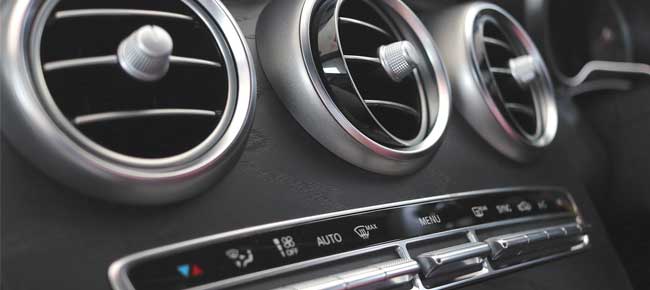It might surprise you to know that for as long as the car has been made women have been involved in its journey.
The automotive industry is generally seen as a male one, and it’s true the industry is one where more men are employed than women, but this doesn’t mean that women haven’t been instrumental in the development of the cars we drive today.
To celebrate international women’s day today we’re going to take a look at how women have helped give us the cars we drive today and why the involvement of women in the car sector is so important.
Women and the Car Throughout History
In this section, we’re going to take a look at how women have been instrumental in the production of cars, the additions they’ve given us and how they’ve helped to increase the popularity of the car, and particular brands.
The First Car
Many of us know that Carl Benz is considered to be the inventor of the modern motor car. But what we don’t all know is that without his wife Bertha Carl’s achievements would never have been possible.
It was Bertha and her money that provided the funds for Carl to build his business Benz & Cie up, through both her dowery and then later her inheritance. This money was crucial for Carl to develop the company into the business it became and would go on to be a large part of Daimler-Benz AG, which is one of the largest vehicle producers to this day.
And when he developed the first Benz Patent Motor Car it was Bertha who travelled in it for the world’s first long-distance petrol-fuelled automobile drive. In 1888 she drove 100km from their home in Mannheim to Pforzheim to visit her mother, accompanied by her two teenage sons. This journey was the first PR journey for a vehicle as well, and it succeeded in Bertha’s mission to make the automobile more well-known and seen as a reliable mode of transport.
The name Mercedes also comes from a woman and without her we could be calling one of the most popular brands on the market by another name.
For more information on the history of Mercedes take a look at this article.
The Windscreen Wiper
It’s thanks to two women that we have the windscreen wipers on our cars today – Mary Anderson and Charlotte Bridgewater.
Mary Anderson initially invented the windscreen wiper after seeing how trolley drivers in the late 1800s had to open the window to clean the rain from their windscreen, or even sometimes having to leave the vehicle to wipe it away.
In 1903 she patented her design for the first manual leaver that was operated from inside the vehicle and cleared the windscreen of rain. However, it wasn’t for several years that her invention would be introduced across the automotive industry and installed on all vehicles.
In 1917 Charlotte Bridgewater built on Mary’s original design by developing and patenting an electronic wiper. Similar to her predecessor’s invention, this wiper was not popular at the time of its being patented but later became widespread and was used across the industry, remaining the basis for modern wipers used today.
In the UK if your windscreen wipers are not working your car will fail its MOT, highlighting just how important Mary and Charlotte’s contributions to the automotive industry are.

Windscreen Glass
Not only were women instrumental in the development of the wipers but it was also a woman who developed the glass of the windscreen they are wiping.
Katharine Blodgett was a physicist and chemist, and her scientific brain earned her the first PhD in Physics to be awarded to a woman by Cambridge University in 1926.
In 1938 Katharine invented a non-reflecting glass, which is the basis of technology used in every modern windscreen around the world today.
This was developed as part of her work at General Electric’s research lab, where she was working on monomolecular coatings for standard glass. General Electric called Katherine’s non-reflecting glass, invisible glass as the light rays were no longer visible on it like they were on ordinary glass.
Katharine’s work was not only vital to the automotive sector but she also improved the glass that’s used in eyeglasses, camera lenses, and even aircraft.
The glass on your car is essential for good visibility and safe driving which is why Katharine’s developments on windscreen glass and preventing the reflective rays of light that are distracting and dangerous is so essential to modern drivers.
The Car Heater
It’s not just the essential that women have been involved in but also the comfort features of the modern car.
In 1893 Margaret Wilcox patented the design for the very first car heater, which was the basis for the heater you use in your car today.
Her design directed the warm air from the vehicle’s engine back into the car to warm the driver and passengers’ feet. It was well received at the time it was introduced but there were a few concerns as you couldn’t control the temperature, and so developments on her invention continued to be introduced until we had today’s multizone, adjustable temperature systems.

Other Notable Women Involved in Car Design
There have been a number of women involved in the design of cars, and there continue to be vehicles designed by women today like the Chrysler Pacifica designed by Irina Zavatski or the BMW Z4 by Juliane Blasiand and Nadya Arnaout.
There are three other women we want to touch upon from the history of the car who we think were pivotal.
The first is Dorothée Pullinger who was the first woman to design a car for female drivers. Until her Galloway 10/20 cars were designed with male drivers in mind, and it was the female drivers who had to adjust. But with the Galloway 10/20 Dorothée made a number of small changes to make driving for a woman easier, including placing the gears in the middle of the vehicle, raising the seat height, adding additional storage space, lowering the dashboard and making the steering wheel smaller. It might not seem like a lot but for women drivers of the time these were some needed and well-received changes.
In the 1950s General Motors (GM) hired six women as junior designers to design the interiors on some of their models to try and appeal to their growing market of female drivers. One of these women was Suzanne Vanderbilt, a woman who eventually rose to chief designer for Chevrolet during her 23 years with the business.
She also patented the inflatable seat back, a safety switch for automotive panels and a motorcycle helmet.
Suzanne and the other junior designers that GM brought in to try and appeal to female drivers highlights a larger shift in the automotive industry with vehicles no longer just being designed for men.
Another influential female designer was Mimi Vandermolen, who was considered to be one of Ford’s best designers during the 1980s and 90s. She was part of the team that redesigned the 1974 Mustang II and the 1975 Granada, working on both the interior and exterior of both. She was then promoted to Design Executive for Small Cars and was the first woman in the business’ history to be in this position.
Part of her process involved having her male designers wear fake fingernails, and even threatened them with having to wear skirts, so that they could experience their designs as a female would to help them pick up on some of the differences and difficulties females faced. Like Dorothée, Suzanne was concerned with ensuring her vehicles were practical and functional for female drivers as much as their male counterparts.
Why it’s Important to Involve Women
Women make up roughly half the population of the world and in turn nearly half the potential drivers. This means that in order for a car brand to be successful they need to appeal to both men and women drivers.
We all know that there are a number of differences between men and women, and this in turn translates into different needs and wants for their cars. The differences can be as simple as ensuring women are involved in the testing and customer feedback process, to ensuring that the typically smaller arm span of women is taken into account when positioning key vehicle controls and other physical differences.
The differences in what men and women want and need from their vehicle is why it’s key to ensure both are involved in the development of cars.
Outstanding Women in the Automotive Industry
We wrote a piece a few months ago about the most influential women across the automotive industry that looked at some of the women we’ve mentioned here but also a number of others.
These women include those who’d been involved in the historical developments of the car, as well as those currently holding positions of power in the manufacturing sector and some of the biggest women involved in racing.
Just click here to find out who else we included.









Leave a Comment